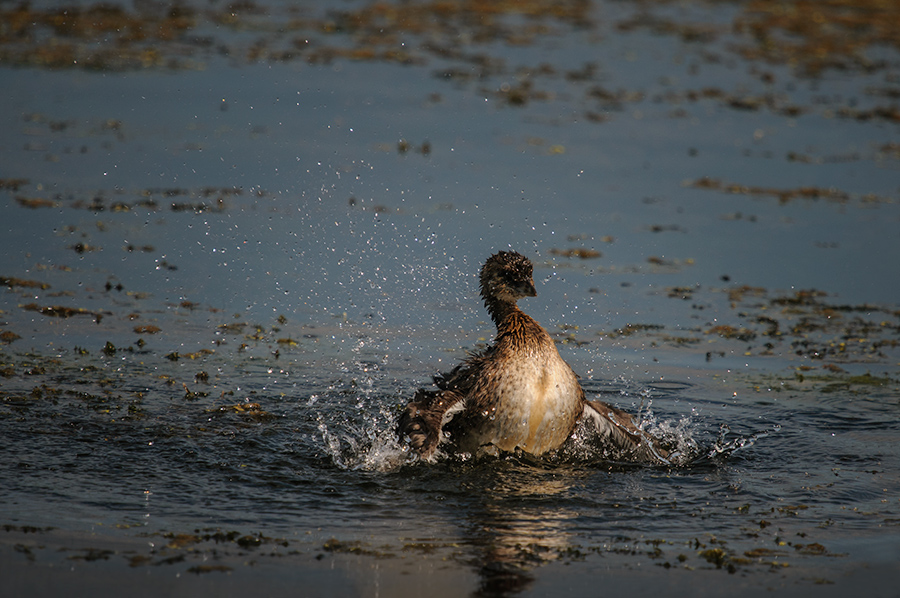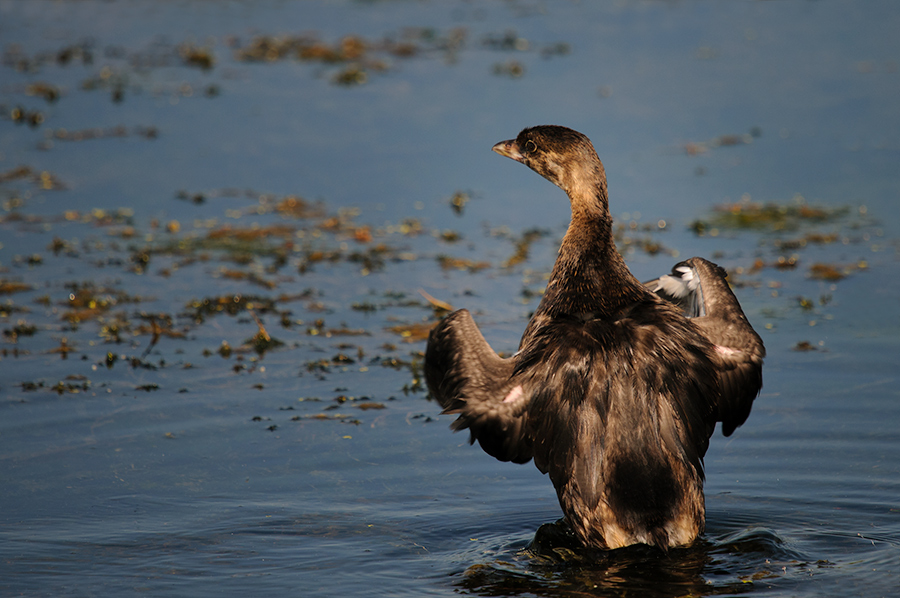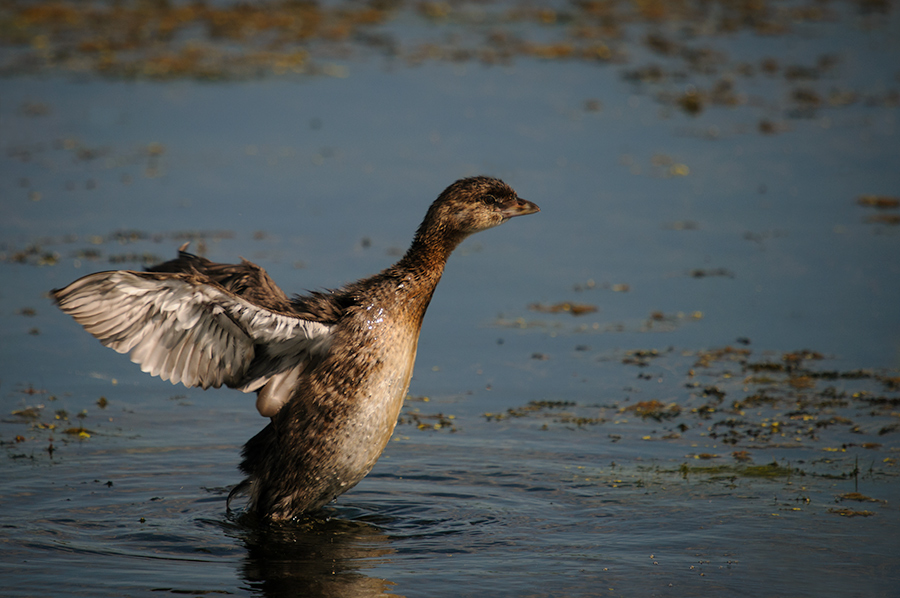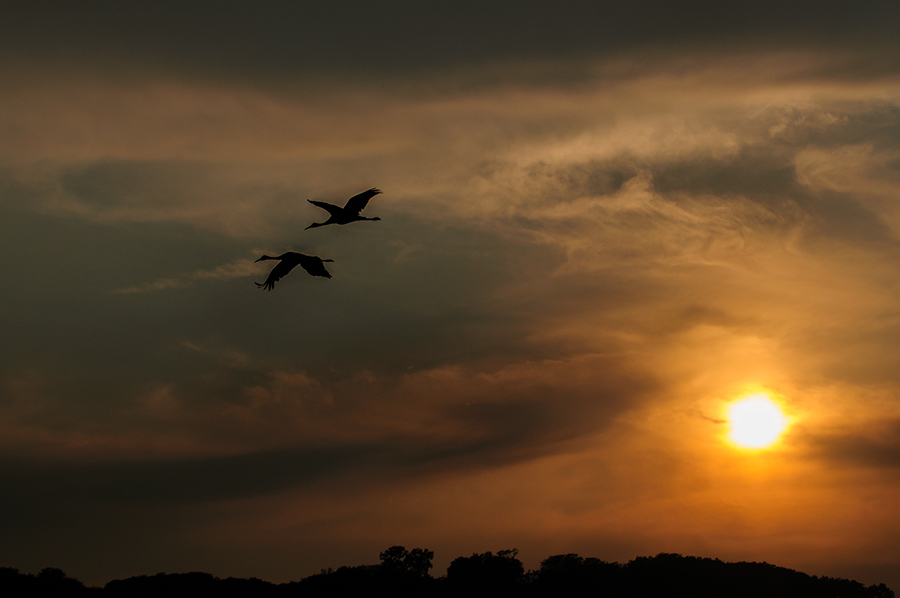
I told you that the best part of my kayak tour on the Mississippi would still lie ahead of me after enjoying the eagle, the water lilies, and the company of the blackbirds. While paddling back to the boat ramp I saw four Sandhill Cranes landing in the water about half a mile ahead of me. This part of the Mud Lake area was already in the shade of the trees but I paddled a little harder, hoping that I would still have some light for a picture. Suddenly two more cranes flew almost over my head and towards the sun. They made a circle and finally landed somewhere between the huge patches of water lilies and arrow heads out of sight for me. Within a second I realized that shooting against the sun would only work if I aim for a silhouette shot of the cranes. I switched quickly to Auto-area Autofocus mode and dialed in -2/3 EV exposure compensation. The sun is a little too bright in this image but not blown out.
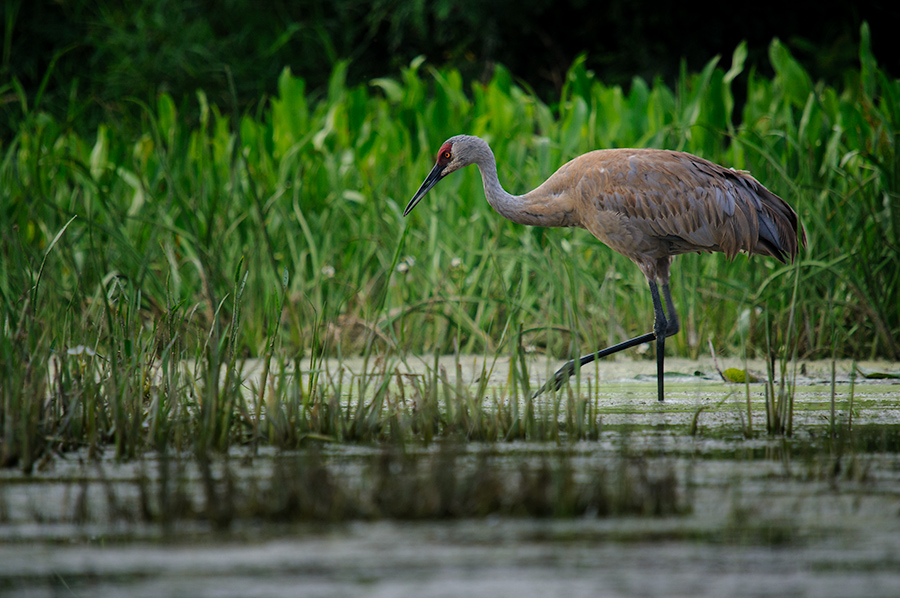
After that the light was fading away fast and I rushed to see if I could still get a glimpse of the other four sandhill Cranes. The last hundred yards I slowed down and approached the birds very quietly and carefully. In every photography class you will learn that it needs 1/500s for a halfway sharp image with a 500 mm lens. I was already up at ISO 400, and this is where I draw the line with the Nikon D300s for my wildlife photography. The best shutter speed I was able to get with these settings was 1/125s. Being in a kayak and the cranes not standing still didn't help either. :-o My keeper rate dropped dramatically but a few images turned out sharp enough to be shown here in the blog...


